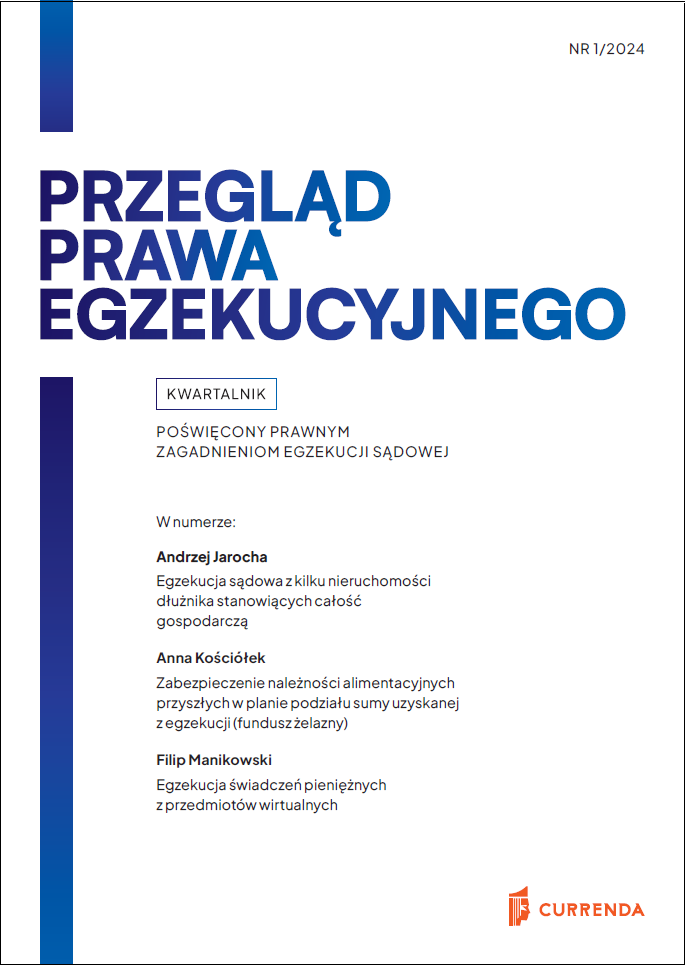
W najnowszym numerze kwartalnika Przegląd Prawa Egzekucyjnego (2024, nr 1) ukazał się artykuł mojego autorstwa pt. Przyłączenie się wierzyciela do egzekucji sądowej z nieruchomości (s. 29 – 55). Zachęcam do lektury.
Abstract: Filing for enforcement proceedings through a real estate attachment produces a two-factor procedural effect – it ties in with a need to summon the debtor to repay any liabilities voluntarily, and make a respective foreclosure entry in the land and title register. Real estate foreclosure shall extend to the property itself, as well as anything else considered mortgaged assets under provisions of substantive law. Regardless of its complex nature arising from the need to engage multiple entities, cumbersome practicalities, and time-consuming measures involving foreclosure itself, specification and evaluation, auctioning, adjudication and ownership title transfer, enforcement proceedings through a real estate attachment are considered a relatively effective way of claim satisfaction. Special measures have been applied to regulate the mechanism of enforcement proceedings through real estate attachment being joined by individuals who – apart from the original creditor initiating foreclosure proceedings – also hold collection titles against the debtor in question. Any creditor initiating enforcement proceedings against a property after it had been seized by another creditor shall join formerly initiated proceedings, and will have no right to demand that any measures already taken be repeated; apart from the aforementioned, the rights of the creditor joining the proceedings shall be identical to those of the original creditor. Joining ongoing enforcement proceedings through a real estate attachment shall be independent of the will of the entity submitting a claim for enforcement proceedings.
Enforcement proceedings through a real estate attachment are based on the principle of procedural unity, which precludes the instigation of multiple separate debt collection proceedings against a single property. Nonetheless, the aforementioned does not preclude the option of instigating separate proceedings to pursue other modes of collection to the benefit of individual creditors. Applying the mechanism of joining ongoing enforcement proceedings through a real estate attachment has to be perceived in the context of a specific property asset, with regard to which a single collection procedure can be initiated at any given time. Furthermore, it would be desirable to amend the unjustified – and not in any way reflected in the law, yet perpetuated – practice of serving debtors with successive requests for payment to entities joining the proceedings.
kwartalnik PPE – link